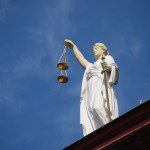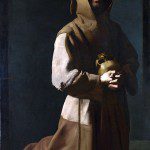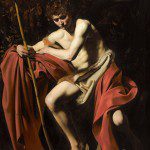“Have in you the mind of Christ…Learn to think the way Christ thought; learn to think with Him…This thinking is not intellectual thought; rather it is also thinking with the heart.”
– Pope Benedict XVI
It was April, 2005. I was not Catholic. And I did not anticipate becoming Catholic. It was, thus, with a certain curious detachment that I witnessed the momentous events in Rome transpire. After decades of charismatic leadership and years of painful physical degeneration, the iconic Pope John Paul II died. Subsequently, the arcane gathering known as “Conclave” ensued to select a new Pope. Frenzied media commentary soon began about the fate of the Catholic Church, the possible theological, philosophical, and political change in Church policy, and, of course, the leader under whom such change would likely occur. It was a time for “Honest Journalism.” Ah…”Honest Journalism”. And so being a cool dispassionate observer, I drank in the coverage.
At the time this was occurring, I was vacationing in Mexico and had just finished Carl Bernstein and Marco Politi’s “His Holiness”, a biography of John Paul II. Irrespective of my Protestantism and mild suspicions about the power and influence of the papacy, it was difficult not to be drawn into the remarkable life of Pope John Paul II and the robust physical and historical Church he represented. Even if I wasn’t Catholic, it was clear that the Catholic Faith was an international force to be reckoned with and, as a result, warranted a certain respectful attention. And attention I would give. I read news periodicals and journals, consumed wall-to-wall news coverage of the funeral and conclave, and ardently began to wonder who would fill the very large shoes of “John Paul the Great”?
It was at this time that I first heard his name. Joseph Ratzinger. Among the “Papabile”, or “pope-ables” being described by the media, Ratzinger’s name emerged again and again. While there were others (whose names have now faded due to the ultimate remarkable legacy Pope Benedict XVI would leave), Joseph Ratzinger was early considered a front-runner to become the “Heir to Peter”. And yet in the midst of the accolades offered to the memory of John Paul II and the laudatory media profiles of pet favorite Papabile, Joseph Ratzinger was far from positively characterized. As John Paul II’s Prefect of the Congregation of the Doctrine of the Faith (which, we were reminded countless times, is the successor name for the original Congregation of the Inquisition) for twenty-four years, Joseph Ratzinger was charged with the maintenance of the orderly observation of the doctrine of the Catholic Faith. This, being no simple job, required consideration of all issues including bioethics, the fidelity of religious orders and educators to Church doctrine, and examination of political Catholic movements such as liberation theology (among many others). In a role that involved deep respect for tradition and periodic discipline of doctrinal deviations, Ratzinger was no media darling. Dissenters came out from all sides to dub the German Cardinal as “God’s Rottweiler”, “The Grand Inquisitor”, and the “Panzer-Cardinal”. Insinuations of hidden scandal were floated about: “Wasn’t he in the Hitler Youth?”, “Didn’t he fight for Hitler’s army?”, “Is he as ruthless as he seems?”. From the beginning, a dark cloud surrounded this man. And I…I just consumed it. After all, my sources were unimpeachable. It was “honest journalism”. Ah, yes.
Let us now move forward to present day. It is Spring, 2013. Cardinal Joseph Ratzinger has retired after serving nearly eight years as Pope Benedict XVI. And I am now a Catholic. Out of my earlier years of dispassionate observation emerged an insatiable hunger to learn more about (and practice) this Faith of rich, Christ-centered mystical and intellectual tradition. In simply paying more attention and considering my sources, it became clear to me who Pope Benedict XVI was and what he has accomplished. Pope Benedict XVI’s years have been marked by remarkable achievements including addressing the deplorable priest-sex abuse scandal, further advancing Catholic reconciliation with Orthodox, Anglican, and Jewish faiths, growing deeper intellectual dialogue with Islam, articulating the gravity of the modern “dictatorship of relativism”, reforming the liturgy of the Mass to be more faithful to the original Latin, penning three extraordinary encyclicals on the supernatural virtues and a scholarly trilogy on Jesus Christ, and galvanizing Catholic youth with massive gatherings and a new Youth Catechism (“YouCat”). And yet these extraordinary accomplishments achieved by an elderly “caretaker” Pope would receive little credit, much less attention. If anything, criticism was the order of the day. It was simply a matter of “honest journalism”.
Needless to say, having seen the stark disconnect between the reality of this Pope and the perception that was sold by the larger media (when any story was covered at all), I was slipping into cynicism. That is until I read Peter Seewald.
Peter Seewald, a German journalist with an impressive resume, found himself undertaking a life-changing enterprise. In 1989, Seewald was asked to be a leading journalist for a well-funded start-up magazine that would, in his own words, “[Test] entrenched opinions, [find] new approaches, and [make] further discoveries.” Like many endeavors, Seewald would cite this experience as one of richer import because he and his colleagues, now in their late 30s, with kids, a little more careworn and a little less naive, discovered a more mature sense of and thirst for “meaning” in the stories they would produce. As he would recall,
“A new word came to the center of our considerations: MEANING. As [my colleagues and I] were discussing it, a silence suddenly fell. We were shocked at ourselves. Twenty years earlier we had trampled on everything that smelled of MEANING, of education, respect, or humility. Yet we now felt, especially when we were exhausted on Monday mornings and telling of our weekend with the children, how painfully we missed these norms, after all.”
And yet, this “sense of meaning” would recoil at any suggestion that this meaning could be rooted in religion. Instead, there was a cool and trendy ignorance of faith. Seewald first noted “In our editorial team, if you knew three out of the ten commandment, that was enough to make you an expert on theology.” But going further, the media milieu in which he found himself (and of which he was surely a creature) was not simply ignorant of, but rather antithetical to faith. Seewald notes,
“The real problem, however, was the pressure of public opinion. No one was free from it. We people of the media had enthusiastically built up this enormous wall of secular dogma – that is, what one should think, do, and wear – and had then bowed down before it ourselves. Today, the paradigm of our world view is beginning to change again. The ideology of my own generation, which advanced the reconstruction of society for four decades and determined the climate of opinion, has lost its creative power. Yet there was still firmly embedded in the media a postmodern litany that cast suspicion upon everything to do with believing. To be more exact, that had to do with CHRISTIAN belief.
People judged the Catholic Church with particular harshness. It was forbidden, on pain of the utmost scorn, to leave one hair of her head untouched. And conversely, any colleague who, like his predecessor, and his predecessor in turn, opened fire on this rather battered structure was considered a candidate for a medal of bravery…Anyone who dared to come out publicly as a Christian must in any case feel as if he belonged to a forbidden organization. At any rate, there had to be something wrong with him.”
Thus, it was during a particular brainstorming session with the editorial staff that Peter Seewald, a lapsed Catholic and creature of the modern media, accepted an assignment. He would interview Joseph Ratzinger, the Cardinal and Prefect of the Congregation of the Doctrine of the [Catholic] Faith. The motive for the story? Seewald described,
“[Ratzinger] was obviously one of the most hated men in the world. A first class subject. Our idea was very simple. Generally speaking, any mention of Ratzinger’s name provoked particular reactions – but basically, people knew very little about the man. Who is he, actually? What motivates him? What makes him the way he is?…[He] had to be, from all you heard, a brusque and severe sort.”
And so began an extraordinary endeavor that would forever change one journalist’s life. But it would first require work – honest work. Seewald’s sound practice and integrity as a journalist is palpable in his writing. First, he performed immense research on his subject by pouring over original compositions, speeches, and archival materials by and about the Cardinal. A broad outline was constructed about Ratzinger the person, his enthusiasms, profession, health, contacts, and politics. Next, extensive interviews were undertaken with close associates (supporters and detractors). The insights of these recollections were then cross-referenced with additional interviews and previous research. From Ratzinger’s fluency in nine languages to his appointment to the vaunted Academie Francaise, from his extensive academic accomplishments to his deep love of Mozart, from his “inexhaustible memory” to his characteristic searching gaze, from his ineptitude with technology to his sleeping tendencies, from his scholarly role models to his penchant for veal sausages – Seewald was truly getting to know his man.
It would soon be time to meet him. But before he did, Seewald outlined the results of his research into four summary points:
“The attitude and argument of the Guardian of the Faith [i.e. Cardinal Ratzinger] were roughly portrayed thus:
Point One: The Catholic Church is not some construction, but is HIS Church, the Church of the Lord. The faith is not constantly having to be reinvented; it is already given through Jesus Christ. The Word is with the legitimate shepherds, and not with the experts, the professors, who contradict each other and compete with each other to produce the most convenient opinions.
Point Two: A genuine understanding of Christianity is possible only in faith, and not with the one-sided approaches of history, sociology, or psychoanalysis. Faith soars above the teaching office of intellectuals.
Point Three: It is not Christians who set themselves up against the world; rather, ‘the world is outraged whenever sin and grace are called by their proper names.’
Point Four: After all the exaggerations of an indiscriminate opening to the world, a restoration is thoroughly desirable. ‘And besides,’ says the Cardinal, ‘it is already under way in the Church.’
Peter Seewald, the seasoned journalist and lapsed Catholic, found himself in a difficult and quite unanticipated position. Even before the first meeting with the Cardinal, he found himself trying to reconcile unexpected discrepancies. Who was Joseph Ratzinger and how could there be such a disconnect between the darker popular perceptions of Joseph Ratzinger and the rather impressive reality that Seewald seemed to be discovering? Perhaps the interviews would shed some light.
Indeed, they would. Joseph Ratzinger would welcome Seewald to their first interview with a warm, German-drawling “Jaaaaa”. A higher-pitched voice. A small, delicate frame. Seewald would see the Cardinal as friendly, warm, confident, yet somewhat fragile. He was genuine and humble. A patient listener yet eloquent speaker, Seewald would explain,
“He had, as it were, a very impassioned way of speaking, both lively and witty. His hands gesticulated, and his eyes flashed. He chose his words carefully, but without trying to impress us with stylistic exaggerations, and you did not need a university degree in order to understand him. Certainly, the construction of many of his sentences had the quality of a musical composition, and if at all possible he would round off his longer explanation with a point, so as to make them even smoother.”
Over the course of several days, Seewald and Ratzinger engaged in deep, intense exchanges lasting hours at a time. The topics were unrestricted and wide-ranging. Questions posed were followed by sharp, probing but respectful follow-up questions. Personal biography and Church policy, nuanced theology and hard-knuckled politics, topics of humor as well as deep pain were explored. And the only stipulation Joseph Ratzinger placed on the project was the right to read the book before publication – with no amendments offered.
The transcripts (which is effectively what Seewald’s three ultimate books are) of dialogue between these two men are nothing short of stunning. To see a journalist ask honest, educated, and relevant questions on matters of faith is refreshing. To then see a Catholic priest/theologian eloquently answer them in an open, honest, and understandable fashion is deeply heartening. It is this type of dialogue that I would describe as Spirit-filled. An honest seeking of and exchange over Truth. A dialogue of the first-order. A rarity, to be sure.
This dialogue revealed the considerable genius of Joseph Ratzinger, but also the honest and evolving worldview of the atheist, Peter Seewald. As one reads Seewald’s works, it is easy to grow more appreciative of the gifts of Ratzinger and the legitimacy of his worldview. But it is also apparent that Seewald himself begins to grasp the Cardinal’s insights and is starting to undergo his own honest, personal transformation. Some excerpts further illustrate:
“I was able to observe and also to grasp that the renunciation of truth solves nothing, but leads, on the contrary, to the tyranny of arbitrariness. All that can then remain is actually merely what we have decided and can exchange for something else. Man is degraded if he cannot know truth, if everything, in the final analysis, is just the product of an individual or collective decision.” (Joseph Ratzinger)
—————–
“What do you want to achieve?” (Peter Seewald)
“I want to make available to a new age the essentials of the Christian faith, and I have the calm certainty that this is not a private battle. That our Lord, who is behind this, is always the stronger. For that reason, I feel confident and unperturbed.” (Joseph Ratzinger)
“What is important to you?” (Peter Seewald)
“Being able to say something that is not entirely without significance for tomorrow. I am concerned to fight for the formation of the age, to defend a certain heritage. I try to say what seems right to me and leave the outcome to Providence. – And the older you get, the more important it is, for me too, to be in conversation with the greats [of Church history].” (Joseph Ratzinger)
——————-
“Many people look to their faith for help in times of trouble and sometimes it works, but sometimes you have the feeling, ‘My God, where are you? Why are you not giving me more help when I need you?'” (Peter Seewald)
“We are not spared these dark nights. They are clearly necessary, so that we can learn through suffering, so that we can acquire an inner freedom and maturity and, above all else, a capacity for sympathy with others…For in those instances when it gets under our skin and goes to our heart, there are quite different factors in play that cannot be explained by universal formulae but can only ultimately be worked through by undergoing personal suffering.” (Joseph Ratzinger)
——————
“For Ratzinger, God’s intervention in this world through Jesus Christ is an absolute reality, which permeates not merely his view of the world, but his entire existence, to his very nerve ends, twenty-four hours a day. People need to recognize anew, he says, that the faith of Christians is an encounter with something sublime and beautiful. Only then would they be able to understand that the doctrine of the faith is a key with which one can unlock the mystery. A convincing image, I reflected. For it follows from that that it makes no sense at all to alter the key in accordance with one’s own notions and interpretations. They may well look more modern. But they would of course no longer fit the lock.” (Peter Seewald)
——————
“An old story occurred to me. When we are born – so says a Jewish tale – an angel comes and lays his finger on our mouths. Forget everything you know, the angel means. Some while later, when the light of the world goes dark again for us, we are all wrinkled, just as we were at the beginning. But what have we learned in the interval, so often full of fear and misery, but also full of joy and fulfillment?”
The remainder of the story is best and brilliantly told by Peter Seewald (and Joseph Ratzinger/Pope Benedict XVI) themselves. Over two decades, Peter Seewald would produce three masterful books of frank, brilliant dialogue between a thoughtful, fair journalist and a brilliant, honest professor-priest. Salt of the Earth (when Cardinal Ratzinger) , God and the World (when Cardinal Ratzinger), and Light of the World (when Pope Benedict XVI) created an enormous sensation. Subsequently, Seewald published Benedict XVI: An Intimate Portrait to contextualize the unlikely journey on which the Cardinal and he found themselves. The works were complex in the depth of research it took for a Peter Seewald to assimilate and interpret, and the decades of prayerful, intellectual endeavor to become a Cardinal Joseph Ratzinger. Yet, the works were also simple. Because they were honest. And they were honest in their search for Truth.
An epilogue to this story is noteworthy. In 2005, during Conclave, I thought I was well-served by the “Honest Journalism” covering the proceedings and characterizing Cardinal Joseph Ratzinger. I was wrong. “Honest Journalism” instead means working extremely hard to collect your data, scrupulously assimilate and analyze it, and follow it to the Truth – even if the Truth goes against your livelihood, your biases, and your deeply ingrained worldview. After his years of work with the Cardinal and prayerful consideration, Peter Seewald would be transformed. As he recalls it,
“I was now convinced that there are indeed answers that illuminate man’s existence and that can help him on his way. The only thing still standing in the way of my return to the Church, which had started when I had accompanied my children, was the scruple that it might look like a cheap marketing stunt for the book, under the caption: “Cardinal Converts Communist to Catholic Church”. So I did it silently – and secretly rejoiced. The voice of my heart spoke without reserve in favor of this step, and my reason said, ‘What do you have to lose? Your unbelief? That’s no loss. On the contrary, there can be no disadvantage in a writer setting a good example for his readers.’ The art of being received back again is called ‘reconciliation’ by the Church, and when it was over, Father Winfried, a Franciscan, who as the town’s parish priest had given me the decisive shove, fetched a bottle of Enzian from the cupboard, happy that someone was coming back to join the ninety-nine sheep he just about had.”
Indeed. And it all began with “Honest Journalism”. Thank you Peter. Thank you, Holy Father. Thank God.











